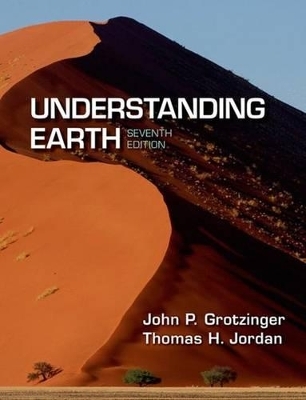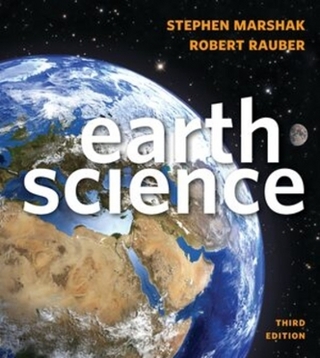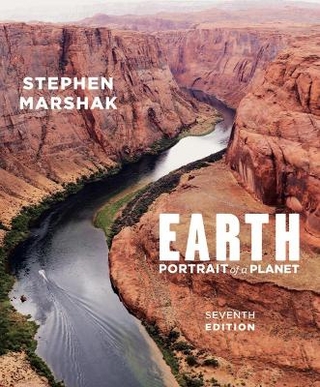
Understanding Earth plus LaunchPad
Palgrave Macmillan
978-1-137-56407-8 (ISBN)
- Titel ist leider vergriffen;
keine Neuauflage - Artikel merken
For the introductory geology or physical geology course. Understanding Earth offers students rock solid content that originated with the ground-breaking text, Earth. This edition incorporates coverage of recent natural disasters (the 2011 tsunami), fracking and other natural resources issues, the latest developments in climate change, and key events such as the Mars mission and the arrest of geologists in Italy.
The pack comes with LaunchPad, containing resources for you and your students; it combines an interactive e-book with high-quality multimedia content and ready-made assessment options, including LearningCurve adaptive quizzing. Curated pre-built units are easy to assign or adapt with your own material, such as video, animations, simulations, readings, quizzes, discussion groups and more.
John Grotzinger is a field geologist interested in the evolution of the Earth's surface environments and biosphere. His research addresses the chemical development of the early oceans and atmosphere, the environmental context of early animal evolution, and the geologic factors that regulate sedimentary basins. He has contributed to developing the basic geologic framework of a number of sedimentary basins and orogenic belts in northwestern Canada, northen Siberia, southern Africa, and the western United States. He received his B.S. in geoscience from Hobart College in 1979, an M.S. in geology from the University of Montana in 1981, and a Ph.D. in geology from Virginia Polytechnic Institute and State University in 1985. He spent three years as a research scientist at the Lamont-Doherty Geological Observatory before joining the MIT faculty in 1988. From 1979 to 1990, he was engaged in regional mapping for the Geological Survey of Canada. He currently works as a geologist on the Mars Exploration Rover team, the first mission to conduct ground-based exploration of the bedrock geology of another planet, which has resulted in the discovery sedimentary rocks formed in aqueous depositional environments. Thomas H. Jordan is director of the Southern California Earthquake Center and W. M. Keck Foundation Professor of Earth Sciences at the University of Southern California. As SCEC's principal investigator since 2002, he has overseen all aspects of its program in earthquake system science, which currently involves over 600 scientists at more than 60 universities and research institutions worldwide (http://www.scec.org). The center's mission is to develop comprehensive understanding of earthquakes and use this scientific knowledge to reduce earthquake risk. Jordan established SCEC's Collaboratory for the Study of Earthquake Predictability and has been the lead SCEC investigator on projects to create and improve a time-dependent, uniform California earthquake rupture forecast. He currently chairs the International Commission on Earthquake Forecasting for Civil Protection (appointed by the Italian government), is a member of the California Earthquake Prediction Evaluation Council, and has served on the Scientific Earthquake Studies Advisory Committee of the U. S. Geological Survey. He was elected to the Council of the U. S. National Academy of Sciences in 2006 and has served on its executive committee. He was appointed to the Governing Board of the National Research Council in 2008. Jordan's research is focused on system-level models of earthquake processes, earthquake forecasting and forecast-evaluation, and full-3D waveform tomography. His other interests include continental formation and tectonic evolution, mantle dynamics, and statistical descriptions of geologic phenomena. He is an author on approximately 190 scientific publications, including two popular textbooks.
1. The Earth System.- 2. Plate Tectonics: The Unifying Theory.- 3. Earth Materials: Minerals and Rocks4. Igneous Rocks: Solids from Melts.- 5. Sedimentation: Rocks Formed by Surface Processes.- 6. Metamorphism: Alteration of Rocks by Temperature and Pressure.- 7. Deformation: Modification of Rocks by Folding and Fracturing.-8. Clocks in Rocks: Timing the Geologic Record.- 9. Early History of the Terrestrial Planets.- 10. History of the Continents.- 11. Geobiology: Life Interacts with the Earth.- 12. Volcanoes.- 13. Earthquakes.- 14. Exploring Earth's Interior.- 15. The Climate System.- 16. Weathering, Erosion, and Mass Wasting: Interactions Between the Climate and Plate Tectonic Systems.- 17. The Hydrologic Cycle and Groundwater.- 18. Stream Transport: From Mountains to Oceans.- 19. Winds and Deserts.- 20. Coastlines and Ocean Basins.- 21. Glaciers: The Work of Ice.- 22. Landscape Development.- 23. The Human Impact on Earth's Environment.
| Erscheint lt. Verlag | 1.8.2015 |
|---|---|
| Zusatzinfo | Book + Access Card. 2 volume-set. |
| Verlagsort | Basingstoke |
| Sprache | englisch |
| Maße | 155 x 235 mm |
| Themenwelt | Naturwissenschaften ► Geowissenschaften ► Geologie |
| ISBN-10 | 1-137-56407-5 / 1137564075 |
| ISBN-13 | 978-1-137-56407-8 / 9781137564078 |
| Zustand | Neuware |
| Haben Sie eine Frage zum Produkt? |
aus dem Bereich


